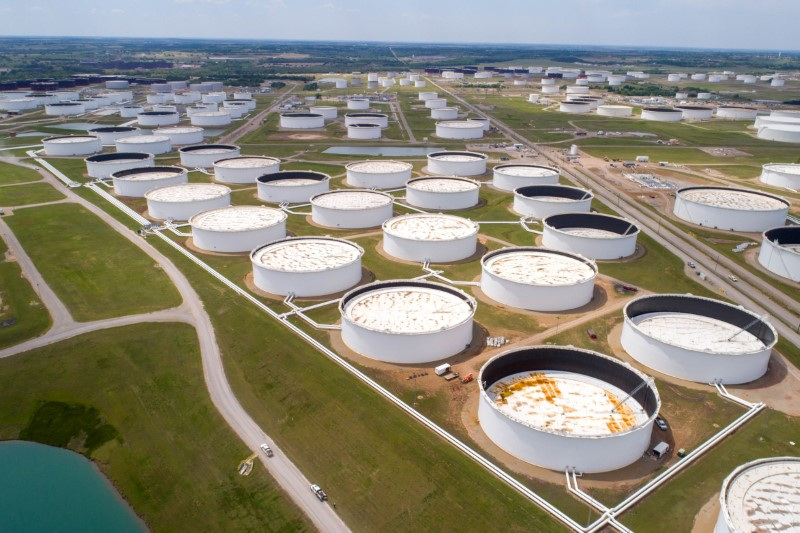Commodities
Oil prices steady after two days of gains

By Robert Harvey and Arunima Kumar
LONDON (Reuters) -Oil prices held steady on Thursday after two sessions of gains, with growing supply risks in the Middle East offsetting demand concerns that had pushed prices to their lowest since early 2024 at the start of the week.
futures fell 8 cents, or 0.1%, to $78.25 a barrel by 1100 GMT. U.S. West Texas Intermediate crude gained 2 cents, or 0.03%, to $75.25.
Brent had gained 2.4% on Wednesday and WTI 2.8% in a second straight session of gains as prices recovered from a sharp drop on Monday, when Brent settled at its lowest since early January and WTI early February.
Prices were supported on Wednesday by a 3.7 million barrel drop in inventories, far exceeding analyst expectations of a draw of 700,000 barrels and marking a sixth straight weekly decline to six-month lows. [EIA/S]
The data suggested that demand was stronger than anticipated and physical markets continue to be tighter than forecast, said Panmure Liberum analyst Ashley Kelty.
“However, crude markets still face headwinds from faltering demand in China and the U.S., and the potential addition of supply by the OPEC+ cartel from Q4,” Kelty added.
Prices also drew support from rising tension in the Middle East and force majeure declared on output at Libya’s Sharara oilfield, said PVM analyst John Evans said.
The killing of senior members of militant groups Hamas and Hezbollah last week raised the possibility of retaliatory strikes by Iran against Israel, further fuelling concerns over oil supply from the world’s largest producing region.
“The market has been on edge as it awaits a response from Iran,” ANZ Research said in a note.
Libya’s National Oil Corporation declared force majeure at its Sharara oilfield from Tuesday, a statement said, adding that the company had gradually reduced the field’s production because of protests.

Analysts at Citi said there was a possibility of a bounce in prices to the low to mid-$80s for Brent.
“Upside risks in the market remain, from still-tight balances through August, heightened geopolitical risks across North Africa and the Middle East, the possibility of weather-related disruptions through hurricane season and light managed money positioning,” Citi said.
Commodities
Oil prices rise; U.S. crude inventories plunge, Russia-Ukraine truce eyed
Commodities
India’s Reliance to stop buying Venezuelan oil over US tariffs, sources say
Commodities
Oil prices climb on Venezuela supply worries

 Forex3 years ago
Forex3 years agoForex Today: the dollar is gaining strength amid gloomy sentiment at the start of the Fed’s week

 Forex3 years ago
Forex3 years agoUnbiased review of Pocket Option broker

 Forex3 years ago
Forex3 years agoDollar to pound sterling exchange rate today: Pound plummeted to its lowest since 1985

 Forex3 years ago
Forex3 years agoHow is the Australian dollar doing today?

 Cryptocurrency3 years ago
Cryptocurrency3 years agoWhat happened in the crypto market – current events today

 World3 years ago
World3 years agoWhy are modern video games an art form?

 Commodities3 years ago
Commodities3 years agoCopper continues to fall in price on expectations of lower demand in China

 Economy3 years ago
Economy3 years agoCrude oil tankers double in price due to EU anti-Russian sanctions























